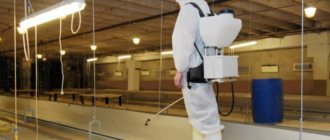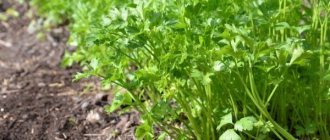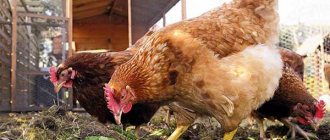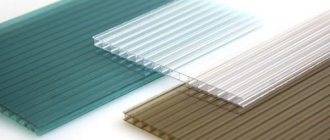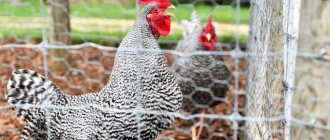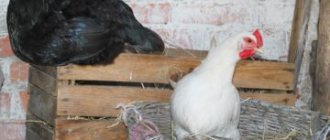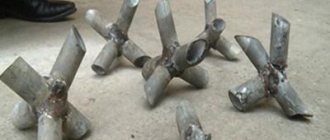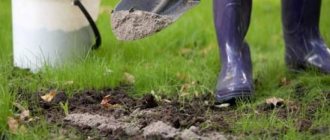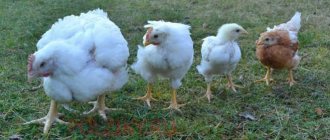Disinfection of the poultry house is included in the rules for caring for poultry. Dirt, droppings, soggy food, and shed feathers provoke the development and rapid spread of pathogens and parasites.
Pathogenic microflora causes infection of chickens and eggs. The article talks about why treatment is needed and how to disinfect a chicken coop.
Why disinfect your chicken coop?
Regular cleaning of the poultry house and care carried out fully by the owners do not guarantee ideal cleanliness in the room. This is due to the pathological processes that form when mixing dirt, feed residues and poultry waste products. Periodic cleansing does not get rid of parasites, viruses and infections. This means that the health of the chickens is in danger.
The development of pathogenic microflora is also promoted by the owners themselves, who unknowingly introduce microorganisms into the chicken coop on shoes and clothes. Therefore, one of the rules for disease prevention is the use of special clothing every time you visit the premises.
Preventive measures should be carried out every 2 months. Simply collecting garbage is not enough; parasites and bacteria take root in perches, under bedding, in hay, in nests and even in walls (especially if they are made of clay).
Reference! If it is not possible to frequently treat the poultry house, this should be done at least once every six months during the off-season (spring, autumn).
Why?
When keeping poultry, a lot of waste is generated (chicken droppings, leftover feed, feathers), which are susceptible to rotting and provide a favorable environment for the life, reproduction and nutrition of various microorganisms.
In the absence of regular cleaning, poultry becomes susceptible to diseases and epidemics, which can lead to serious damage to the household.
A sick broiler loses weight, and the meat loses its presentation and becomes unsafe for consumption. Sick laying hens lay fewer eggs and may be infected with an infection such as salmonella.
During epidemics caused by lack of disinfection, the likelihood of death increases. Poultry mortality increases significantly against the background of an increase in the number of parasites in the chicken coop: lice, lice, feather eaters, ticks, trematodes.
To combat harmful microorganisms, it is necessary to regularly disinfect the premises.
Disinfect yourself or trust the professionals?
Whether to involve professionals in the work or do the processing yourself is a matter of individual decision. Costs for funds are provided for in both cases; when calling a specialist, you need to plan additional expenses for the service.
The decision about who will carry out the disinfection is influenced by the following factors:
- the essence of the problem (in case of serious illnesses or mass infection by parasites, it is better to seek qualified help);
- the opportunity to purchase high-quality medications (in remote regional centers it is not always possible to purchase good products; it is easier to contact the sanitary service);
- independent choice of means requires careful study of the instructions, otherwise you can cause harm to both people and birds;
- the ability to pay for a call to the sanitary service every 2 months (for many this is expensive, one treatment costs 1500-2000 rubles).
After weighing all the pros and cons, the best option is selected. It’s better to combine them to avoid even greater losses in the fight against diseases and parasites.
The influence of cold and warm floors on the health of chickens
Thanks to the presence of a floor, the required temperature will be maintained in the chicken coop, which does not depend on weather conditions outside the room. The characteristics of the materials and the quality of installation influence the growth, development and health of the inhabitants of the chicken coop, and in addition to this, the floor performs several main functions:
A cold floor has a negative effect on egg production. Thanks to the warm floor covering, chickens' productivity increases and their immunity becomes stronger. Residents of properly equipped chicken coops are practically not susceptible to the following types of diseases:
- arthritis;
- pneumonia;
- various colds.
When choosing a floor covering, you need to remember that the materials must be safe for birds, not susceptible to moisture, have low thermal conductivity and be environmentally friendly.
Treatment for infections
The disinfection procedure must be carried out using certain drugs. It is easier to get rid of microbial infections. There are many products on the market that can eliminate the problem in 1-3 treatments.
Things are more complicated with viruses. They do not accept even revolutionary disinfection methods well. Among the drugs that have an antiviral effect, the following stand out: Virosept, Virotsid, Bianol.
From parasites
Disinfection against parasites is carried out as a preventive measure once a year. If insects are detected, unscheduled disinfection is carried out using special preparations. They must be selected taking into account the spectrum of action. Preference is given to those agents that are active against several types of parasites.
It is impossible to remain idle when identifying insects. Meat and eggs may contain substances hazardous to humans. And birds suffer no less from harmful insects, losing productivity and activity.
Features of the disinfection procedure:
- mandatory change of litter;
- changing lime whitewash on the walls;
- parallel treatment of poultry.
Precautionary measures
It is worth remembering that spraying any disinfection solution in a closed area can be hazardous to human health. Therefore, when implementing decontamination of a pigsty, it is necessary to strictly adhere to basic precautions:
Disinfection Precautions
- The procedure should be carried out exclusively in special clothing, safety glasses and rubber gloves. The mouth and nose are protected with a thick gauze bandage or a respirator.
- Before using the drug, you must carefully read the instructions.
- If chemicals come into contact with eyes or skin, rinse with plenty of liquid and seek medical attention if possible.
- Disinfectants should be stored exclusively in the original container, tightly sealed. Places where substances are stored must be completely out of reach of children.
- It is advisable to carry out the processing by two people. The first one performs the main pollination. The second helps and monitors the condition of the first.
High-quality disinfection helps prevent most infectious diseases caused by spore-forming microorganisms. This, in turn, significantly saves the farm owner’s money, which would have to be spent on treating animals, and maintains the number of livestock.
How to disinfect a chicken coop yourself
By following the rules for sanitizing the premises, you can cope with the disinfection of the chicken coop yourself.
Preparation
First you need to prepare everything you need to complete the job:
- clothing covering most of the skin;
- personal protective equipment (rubber gloves, respirator, goggles);
- tools and materials (sprayer, bucket, broom, shovel, plastic bags, rags, special preparations, water).
All equipment used in sanitation should be washed using detergents after finishing work. Clothes also need to be washed and rinsed several times in warm water. The respirator must be disposed of.
Types of funds
The choice of disinfectants is wide, which makes it possible to choose the most suitable option. They differ not only in composition, but also in the form of release.
Aerosols
The active ingredients of aerosol preparations are often turpentine and bleach. The combination of these substances gives an exothermic reaction, manifested in the form of a cloud. A light mist disinfects indoor surfaces, penetrating into cracks and crevices. The process takes 30 minutes, after which airing takes place. For effectiveness, the procedure is repeated for 3-4 days with one treatment per day. As indicated in the instructions, the poultry may be kept in a chicken coop during processing.
Aerosol preparations also include sulfur bombs: Fas, Climate. This is already toxic smoke, so you need to use the product in empty poultry houses. After using the product, close the doors and windows tightly. Airing is carried out after disinfection for a week.
Reference! Sulfur bombs act on mold, mildew, and parasites. However, they are not effective in controlling pathogens.
Salt solutions
Products based on the sodium salt of hypochlorous acid exhibit high activity against pathogenic microorganisms. They are sprayed using spray bottles or sprayed with a regular broom.
Smoke bombs
Treating the chicken coop with a sulfur bomb
Smoke bombs are available for sale both in livestock stores and in construction and household departments. They are inexpensive and come in packs of 8. They are based on sulfur, which is also a disinfectant for chicken coops.
Initially, sulfur bombs were developed to combat mold, yeast and pathogenic flora in basements and cellars.
They also fight well against rodents, have an excellent insecticidal effect, but have significant disadvantages:
- The product cannot cope with viruses of an epidemiological nature.
- To concentrate sulfur gas, all corners of the space are cleaned, achieving ideal correct geometry. This is the only way the substance works most effectively.
- The fumes are poisonous and can harm even animals located far from the epicenter.
- Airing after treatment takes from 7 to 11 days. During this period, the chickens cannot be released back.
Review of the best disinfectants at home
Quick and effective disinfection of the poultry house is carried out using purchased products. There are a lot of them on the shelves, which sometimes makes choosing difficult. If you have no experience using antiseptics, you can use rated drugs, which the majority of users respond positively to.
Glutex
Domestic product. Purpose: treatment of poultry houses and other premises where domestic animals are kept. The disinfecting effect is provided by the following active components:
- glutaraldehyde;
- didecyldimethylammonium chloride;
- glyoxal.
The concentrated liquid has a green tint. Features of the product: neutral effect on metal and other types of materials, hypoallergenic.
The product has the following properties:
- bactericidal;
- fungicidal;
- virucidal.
Processing is carried out in the absence of birds. To destroy pathogenic microflora, dilute a 1% solution (0.5 l per 1 m2), for prevention - 0.5% (300 ml per 1 m2).
Delegol
The product is used for disinfection and prevention. The effectiveness of the drug is ensured by the following substances:
- isopropanol;
- parachloromethacresol;
- orthophenylphenol;
- lactic acid.
The bluish-tinged liquid is transparent in appearance and dissolves well in water, regardless of its temperature. The instructions describe in detail the requirements for reorganization.
Ecocide S
The product is available in powder form. Thanks to its complex action, it effectively deals with viruses, microbes and other pathogenic processes. The disinfecting effect is achieved after 1-2 treatments. The product is developed on the basis of potassium peroxomonosulfate. Also includes:
- sodium dodecylbenzene sulfonate;
- organic acids;
- inorganic salts, etc.
The powder is packaged in bags of different sizes, which allows you to choose the best option for the parameters of the chicken coop.
Virocide
Concentrated liquid product with foaming effect. Available in cans of various sizes (5, 10, 20 l). Its spectrum of action extends to bacteria, viruses, mold, fungi and algae. Features of the product:
- active substances continue to act for a week after the procedure;
- eliminates the effect of resistance in microorganisms;
- does not cause corrosive processes and oxidation when it comes into contact with different surfaces.
The effectiveness of the treatment is ensured due to the properties of the active substances used in the production of the drug:
- alkyldimethylbenzylammonium chloride;
- didecyldimethylammonium chloride;
- glutaraldehyde;
- isopropanol;
- turpentine derivative.
Folk remedies
The fight against parasites and diseases has been carried out at all times. When there were no special drugs, people coped with improvised means. A time-tested antiseptic is iodine. To disinfect 20 m2 of space you will need only 10 grams. The procedure takes place without the presence of a bird. After the sanitization is completed, the poultry house is ventilated and the livestock are returned to their original place.
Another affordable and effective remedy is a solution of hydrochloric acid and potassium permanganate (proportions 5:1). The prepared mixture is left in the room for at least half an hour. The bird is first removed from the chicken coop. While disinfection is in progress, removable equipment must be washed with water and vinegar. Before releasing the birds, the container with the working solution is removed.
A mixture of vinegar and kerosene is more aggressive. The components are taken in equal proportions. The solution is sprayed on the surface of the poultry house, after which the room is left closed for 3-4 hours. However, there should be no birds in it. The procedure is completed with prolonged ventilation and washing the chicken coop with water and vinegar (200 ml of vinegar per bucket of water).
Disinfecting the chicken coop with the chickens
If treatment in the poultry house is carried out together with the chickens, then the measures are more correctly called sanitation. The purpose of the procedure: to significantly reduce the concentration of pathogenic microorganisms. It is not possible to completely destroy bacteria and viruses in this way.
When performing disinfection, you must strictly follow the instructions so as not to harm the birds. This is especially true for laying hens. Despite the low concentration of the active components of the drug, they can cause irritation of the mucous membrane and even a mild form of poisoning.
Reference! Sanitation is performed no more than once a month. All walls in the chicken coop and equipment are treated outside the premises with special means.
During and after disinfection procedures, you need to keep doors and windows open, or turn on forced ventilation to ensure a flow of clean air.
For sanitation, smoke bombs and special solutions are used that are effective against fungi and pathogens of pulmonary diseases. The smoke screen formed after igniting the bomb kills pathogenic bacteria, thereby cleaning the surfaces of the poultry house and the air. The duration of the procedure is 30 minutes. Upon completion, long-term ventilation is carried out.
In addition to checkers, Ecocide is used for sanitation. The drug can be used indoors with chickens. When determining a single dose, the parameters of the chicken coop and the size of the flock are taken into account. Spraying is carried out with a 0.5% solution or cold fog at the rate of 30 ml per 1 m3.
Features of treatment after chicken illness
Disinfection is carried out taking into account the problem that has arisen. If the infection was caused by parasites, you need to purchase a drug of appropriate action to disinfect the premises.
Treatment and disinfection of the chicken coop are carried out in parallel. Experienced poultry farmers recommend first treating the entire flock. After this, the birds are kept in a pen outside or in another room. In the meantime, the chicken coop is thoroughly cleaned. The litter is disposed of, feeders and other removable containers are washed and treated with special preparations.
In the poultry house, you need to scrape off the top layer from the walls and floor. It is also better to wash off the lime so that pathogens or eggs do not remain under it.
Reference! When purchasing a drug, you need to clarify what types of parasites it acts on, whether the effect applies to larvae and eggs, pathogens of fungal diseases.
Disinfection after chicken illness should be carried out repeatedly. Sometimes 3-4 multiple procedures are required. After a long period of ventilation, the birds are returned to their original place. But before that, they need to be examined to avoid re-infection.
Poultry house flooring options
Most home chicken enthusiasts don't think much about how important it is to create a natural habitat inside the coop. Beautiful plasterboard walls or a floor scrubbed white from sterile wooden boards for chickens are always nothing more than the whims of the owners. Therefore, in villages and villages, even at dachas, most often the floor in the chicken coop is earthen or stuffed.
Covering with soil and sawdust
Of course, leaving the floor of the chicken coop in the form of clean soil would be the height of ill-consideration. This option can be done only for a temporary shelter in the summer, and then with the obligatory laying of a steel mesh in the ground and filling the surface with a layer of sand, limestone and sawdust. Otherwise, chickens will suffer from a host of unpleasant infections. Therefore, it would be more correct to call soil floors adobe.
Start preparing for the process of installing the floor by choosing waterproofing and insulation. The problem of arranging the floor in the chicken coop must be solved at the stage of constructing the foundation of the building.
The procedure for making an adobe floor in a chicken coop is as follows:
The adobe blocks for the floor in the chicken coop are made using adobe brick technology. Horse manure and straw are added to the mixture of soaked and crushed clay. The mass is rolled out in the sun into a 10 cm thick path and dried under the sun for three days. Next, they cut it into a block and lay it out in the sun for at least a month.
After sealing the adobe floor in the chicken coop, the outer layer is covered with sawdust, sand and dry grass; it will have to be changed as needed, but at least once a summer.
Concrete and heated floors
It must be admitted that there is plenty of hassle and fuss with adobe floors. A simpler version of the floor for a chicken coop can be made by pouring a concrete screed. Sometimes a concrete floor is the only option, for example, if there are a lot of rats or mice, weasels or foxes in the area. In this case, they are not limited to a concrete screed and at least the basement part of the room is made of brick or casting.
As in the previous case, you need to dig a mini pit under the concrete floor in the chicken coop. First they lay sand on the bottom, then gravel, the last layer is broken brick, it can be silicate or red clay, it doesn’t matter. The thickness of the brick backfill should be at least 15-20 cm.
The brick cushion is covered with sand, and each fragment is driven into the base of the floor with a heavy hammer or sledgehammer. The work is hard, but it will require at least another day of work in the coop to knock down and level the brick bed.
Next, the screed is poured, without waterproofing and insulation; it will be replaced by a layer of broken brick. For the screed, prepare a regular 1:4 batch using M400 or M300 cement, the main thing is that the consistency of the first batch is liquid enough to spill over the entire surface.
The second step is to plan the surface without beacons, using the usual plastering rule. If desired, you can form a slight slope and drainage. This is useful when you have to wash and disinfect the floor with a jet from a portable high-pressure car wash.
If you plan to make a heated floor in the chicken coop with your own hands, then it will need to be assembled on a ready-made screed, so that the level of laying the heating film or hose with electrical wiring is higher than the ground level around the chicken coop. Before making a heated floor in the chicken coop, you will need to glue roll waterproofing and a layer of insulation made of foamed foil polyethylene. The upper part of the floor is covered with OSB slabs or boards.
Wooden floor for chicken coop
You often have to enter the poultry house for cleaning, refilling feeders and drinkers. There is no desire to walk on droppings, laying a ladder is pointless, so you have to choose which floor is better in the chicken coop - comfortable for the chickens or for their owners.
In the second case, the floor is laid from boards, but its structure is somewhat different from the usual:
The floor in the chicken coop is made up of individual boards. At the same time, the floor is very warm, clean and comfortable for working in the poultry house. Part of the chicken droppings falls through the cracks onto the sand and sawdust bedding and burns up into fertilizer. What remains on the floor can be easily removed with a scraper in a few movements. For cleaning and disinfection, you can take the boards outside, process and dry them in the sun, and at the same time carry out sanitation inside the poultry house.
Prevention
It is possible to deal with parasites and pathogenic microflora, but it is easier to carry out preventive measures in a timely manner to protect birds from serious diseases. Events are held in compliance with the following rules.
- Treatment of the premises must be regular (at least once every 6 months or at least a year). The poultry house is disinfected regardless of whether there are problems with parasites/diseases or not. Experienced poultry farmers recommend the frequency of disinfecting the chicken coop once every 2 months.
- To prevent the development of microorganisms, it is necessary to install a ventilation system in the poultry house. Even a primitive design will provide air flow. In a ventilated room, the growth of bacteria and viruses is greatly reduced.
- You should clean the chicken coop 1-2 times throughout the week. The litter is thoroughly shaken out outside. Bird nests and perches are also cleaned (it is better if they are removable).
- It is recommended to sprinkle the swept floor with a fresh portion of sand. Birds are more comfortable with it than with straw or pine shavings.
- During cleaning, a passage is made over all surfaces, including walls.
- As a preventive measure, the walls are whitewashed with lime.
Do not despair when identifying alarming symptoms in birds. Timely treatments and regular preventive measures will help get rid of the problem and subsequently maintain the poultry house in acceptable sanitary conditions.
Watch a video about an ancient method of disinfecting chicken coops and other utility rooms:
conclusions
- Disinfection of a chicken coop (disinfect/disinfect) is a matter that requires regularity and careful preparation of keeping chickens, otherwise its absence can lead to illness.
- Before starting to irrigate the barn using bactericidal substances, the room is subjected to thorough mechanical cleaning.
- The method in which the chickens remain is not very effective and can serve as an intermediate, supporting stage rather than as the main method of disinfection.
- Of the industrial preparations, the most in demand are: Glutex, Monclavit, Delegol, Ecocide S, manganese.
- Sulfur bombs, slaked lime and purification by fire are also used as auxiliary aids.
- Farmers use 2 main options: wet cleaning and aerosol. The latter, creating a veil of cold fog, settles more slowly, disinfecting the air, and is considered the most effective.
You can read about the proper keeping of chickens at this link.
